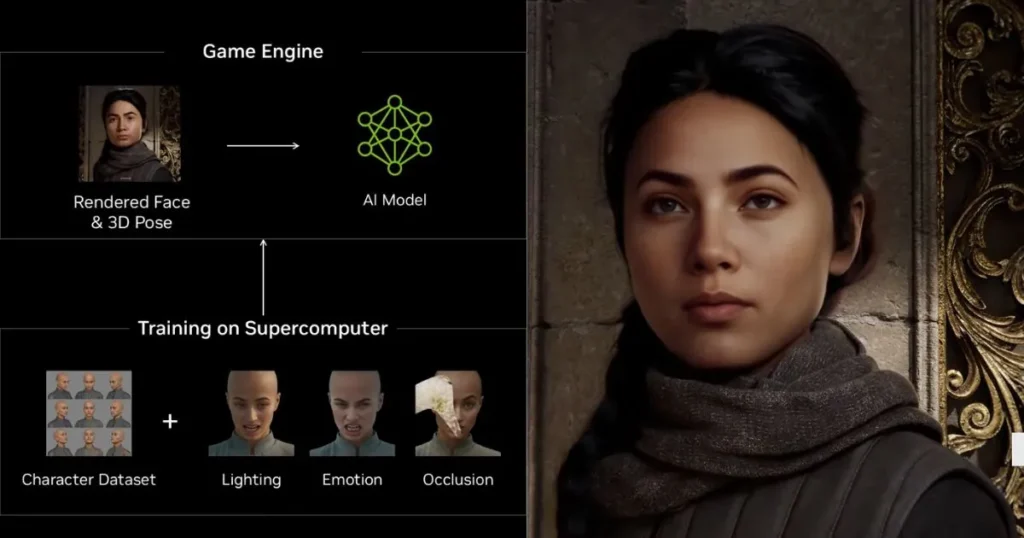The Future of Gaming? NVIDIA Bets on AI to Generate Every Pixel
NVIDIA is envisioning a radical future for gaming graphics—one where every single pixel on your screen is generated by artificial intelligence. This ambitious initiative, known as Neural Rendering, represents the next evolutionary leap beyond today’s AI upscaling and frame generation, aiming to create entire scenes through deep learning rather than traditional rendering.

The concept extends an idea first floated by NVIDIA CEO Jensen Huang over two years ago and aligns with futurist predictions that most future frames could be AI-synthesized. While early attempts at fully AI-rendered scenes often produced awkward or unconvincing results, NVIDIA believes its Blackwell architecture and beyond possess the computational power to make neural rendering both practical and visually stunning.
More Than Just Graphics: The Drive for Efficiency
Interestingly, NVIDIA emphasizes that Neural Rendering isn’t solely about achieving higher fidelity. A primary goal is dramatic energy savings, particularly for laptops. By using AI to predict and generate frames instead of rendering them through traditional, computationally intensive methods, GPUs could complete their work faster and return to an idle state sooner. NVIDIA claims this “race to idle” approach with AI frame generation could potentially halve power consumption during gaming, a significant benefit for mobile devices.
The Technology Foundation
The company states that current hardware, including the flagship RTX 5090 and the professional RTX PRO 6000, is already equipped to begin pioneering this technology. The PRO 6000’s ability to operate in four multi-instance GPU configurations, each with 24 GB of memory, highlights the immense VRAM and parallel processing power required for such tasks.
The path to full neural rendering will likely be incremental. NVIDIA is expected to blend technologies like:
- AI Frame Generation: Drastically increasing the number of AI-synthesized frames between traditionally rendered ones.
- RTX Remix: Using AI to enhance textures and details in real-time, preserving artistic intent while improving quality.
- Neural Face & ACE: Smaller-scale implementations, like AI-driven character expressions and smarter NPCs, which serve as stepping stones.
Challenges and the Road Ahead
Despite the excitement, NVIDIA acknowledges that a future of 100% AI-generated pixels is still a few GPU generations away. Widespread adoption will require overcoming significant hurdles in latency, consistency, and ensuring the AI accurately reflects a game developer’s original artistic vision without introducing artifacts or a “synthetic” feel.
Also, Read
- ASRock’s Smart Power Cable Fights Melting with Built-In Heat Sensor
- NVIDIA Expands RTX 50 Access – Priority Purchasing Opens in 5 European Countries
- Inside China’s AI RTX 4090s GPU Black Market – A 3.5-Hour Exposé Reveals Smuggling and Modified RTX 4090s
For now, the focus remains on enhancing existing technologies. Gamers and critics who are already skeptical of AI-generated frames may need time to warm to the idea of a fully AI-rendered world. Nonetheless, NVIDIA’s push signals a definitive direction for the industry: the line between rendered and generated graphics is set to blur beyond recognition.
Source: techpowerup, servethehome